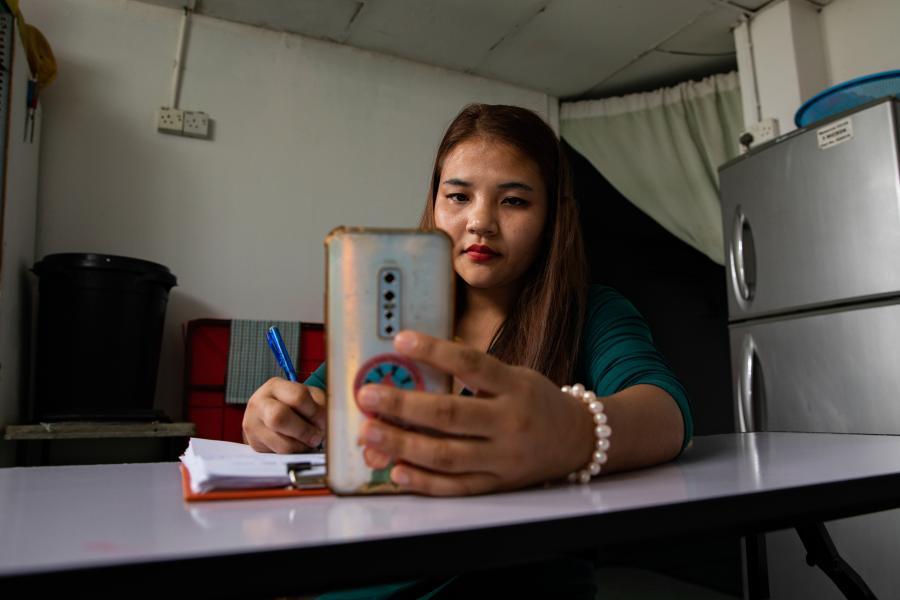89% are from Myanmar, including some 108,862 Rohingya whilst the remaining are from 50 other countries. 65% of refugees and asylum-seekers are men, while 35% are women and girls. 27% are children below the age of 18. They live in cities and towns across Peninsular Malaysia, with sizeable populations in Klang Valley, Johor, and Penang.
In the absence of a legal framework to manage the refugee situation, UNHCR conducts all activities related to the registration, documentation, and status determination of refugees. UNHCR also works on finding solutions for refugees and cooperates with the Government of Malaysia to enhance the protection environment for asylum-seekers and refugees through the development of a more inclusive refugee policy in line with the Sustainable Development Goals and the Global Compact on Refugees. In addition, UNHCR works with partners (including civil society, the private sector, and refugees) on strengthening refugees’ self-reliance by advocating for access to legal work as well as education, healthcare and social protection services.
Explore the UNHCR Malaysia website for more information and Operational Data Portal for updates related to Malaysia, maritime movements and the Myanmar situation.
Populations
Population types
Note: The "Stateless" category does not include stateless people who are also in other categories, to avoid double counting. The total number of stateless, across all categories, is .
NB: 2025 figures are planning figures.
Source: UNHCR Refugee Data Finder for years until 2022, UNHCR planning figures (COMPASS) otherwise.
Population by country
NB: 2025 figures are planning figures.
Source: UNHCR Refugee Data Finder for years until 2022, UNHCR planning figures (COMPASS) otherwise.
Population by origin
NB: 2025 figures are planning figures.
Source: UNHCR Refugee Data Finder for years until 2022, UNHCR planning figures (COMPASS) otherwise.
Financials
Budget and expenditure trend
Budget information for the current year is updated monthly, while budget and expenditure information for all other years are final.
Budget by pillar
Budget by objective
Note: The table presents the budget for this operation broken down at the objective level. Resource allocation at the objective level is subject to change during the course of the year as the operational situation evolves and priorities shift. The current budget, reflected in the bottom line of this table, is updated on a monthly basis and is replaced by the final budget at year-end.
Expenditure by Outcome Area
Budget by Impact Area
Source: 2023 budget as approved by the Executive Committee in October 2022.
2022 current budget as approved by the High Commissioner as of October 2022; pending presentation to the ExCom's Standing Committee.
Budget by Outcome and Enabling Areas
Source: 2023 budget as approved by the Executive Committee in October 2022.
2022 current budget as approved by the High Commissioner as of October 2022; pending presentation to the ExCom's Standing Committee.
Budget by Impact Area
Source: 2024 budget and 2023 current budget are taken from the budget document approved by UNHCR's Executive Committee in October 2023.
Budget by Impact Area
Budget information for the current year is updated monthly, while budget and expenditure information for all other years are final.
Budget by Outcome and Enabling Areas
Budget by Outcome and Enabling Areas
Budget information for the current year is updated monthly, while budget and expenditure information for all other years are final.
Budget by Impact Area
Budget by Outcome and Enabling Areas
Strategy
Impact Statements
Latest updates
The boundaries and names shown and the designations used on this map do not imply official endorsement or acceptance by the United Nations.
UNHCR GIS data is publicly accessible in the Operational Data Portal






